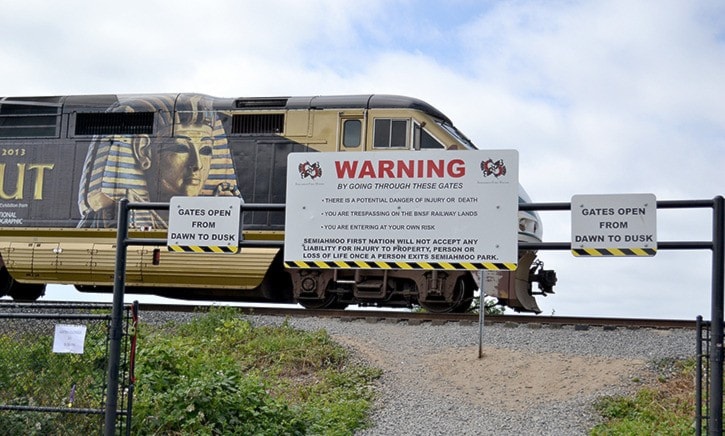Editor:
Re: Safety a shared responsibility, Sept. 24 editorial; Mayor ‘will resist’ rail fencing, Sept. 24.
The PAN editorial and Mayor Wayne Baldwin’s – and some White Rock councillors’ – bravado towards Transport Canada and its request for safety measures are irresponsibly misplaced.
The BNSF rail line goes through land partially leased by the city for parking lots. The language of that lease clearly states the governing body is Transport Canada. The parking lots and promenade are not White Rock land and are not under White Rock legal jurisdiction.
On Sept. 6, council received a copy of a letter from Transport Canada regarding the tragic event July 14 (White Rock jogger killed by train, July 16) and the train-whistle-cessation arrangement that is currently in place.
The federal authority notes rail and pedestrian traffic have substantially changed since the existing whistle-cessation arrangement was established over 20 years ago. The letter states, in bold type: “Transport Canada requests that the City of White Rock, in conjunction with BNSF, undertake a comprehensive safety review of the crossings currently granted whistle cessation.” Transport Canada expects a copy of the review by Oct. 31.
There are no demands for specific safety measures in this letter. The intent is that the city and BNSF collaborate to bring the White Rock pedestrian crossings up to the realities of 2013. Those realities include a greatly increased recreation and tourist pedestrian traffic standing two paces from a rail line now used by a dramatically increasing rail freight carrier.
During the last term of council, Transport Canada focused on trees and shrubs between the parking lots and rail line on East Beach that the inspectors deemed an enticement to pedestrians to cross the rail line at random locations. An order was given to the city to remove the landscape elements, or a subsequent order would be for fences to protect the rail line. The trees and shrubs were immediately, without question, removed.
The Semiahmoo First Nation had the same response when they fenced off their property and left openings for people to cross the rail line and access the beach. Those access points were deemed enticements to cross a rail line and are now boldly marked and gated.
The power of Transport Canada is unquestionable. Their issue, in this case, is pedestrian rail-line safety. Anita Lewis’s tragic death may have provoked this recent action, but it is not the cause. The city has a duty to provide a safe and clearly defined interface with a very dangerous rail line. A distracted person, an uncontrolled child or a person wishing to do themselves harm do not negate responsibility.
Previously, this mayor and council recognized potential traffic hazards to school children, seniors and pedestrians in the Roper Avenue corridor and immediately installed four-way stop signs at Best and Findlay streets. It was preventative safety. There is as great a need for preventative safety beside and crossing the rail line.
This is not an adversarial situation against unseen bureaucrats in Ottawa. This is not about the city choosing its victims to justify inaction. This is about the City of White Rock collaborating with BNSF and Transport Canada to provide a safer environment for a sadly predictable and uniquely dangerous rail and citizen environment.
Coun. Larry Robinson, White Rock
Timely solution
A less-intrusive measure to improve safety is to reduce the speed of the train.
What is the chance of getting killed – or killing someone – in a road accident while on the way driving to the waterfront, as compared to the chance of getting killed by a passing train while there?
Fen Kong Liew, Surrey
